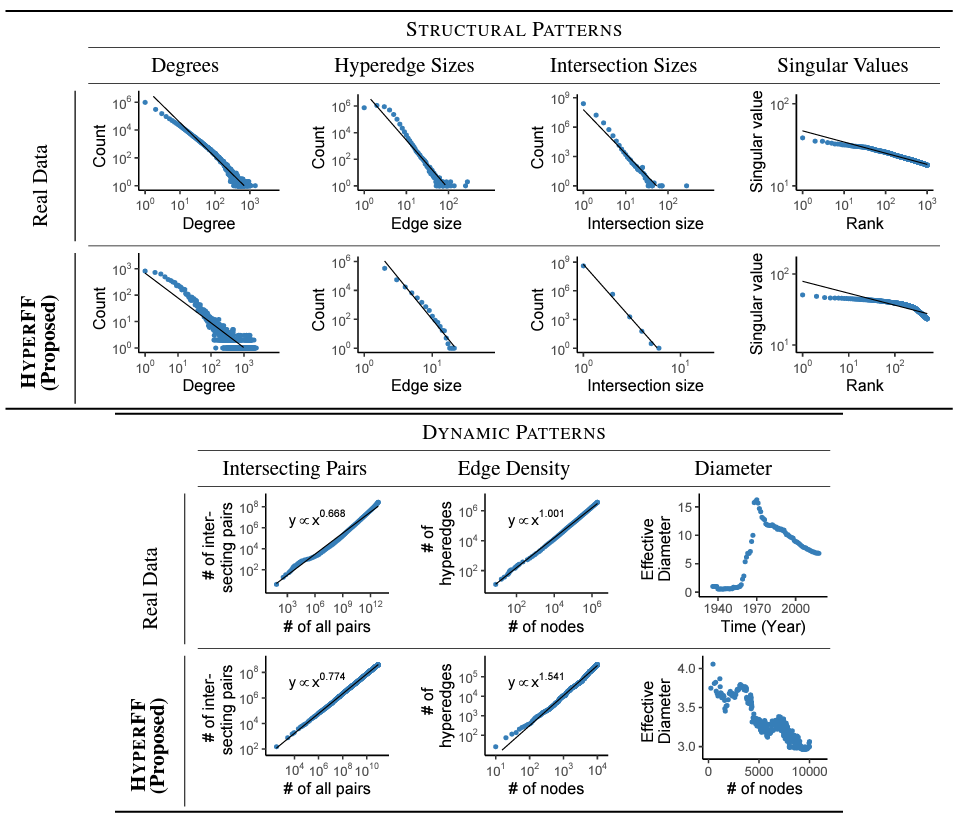Jihoon Ko*, Yunbum Kook*, and Kijung Shin
Knowledge and Information Systems
Abstract: What kind of macroscopic structural and dynamical patterns can we observe in real-world hypergraphs? What can be underlying local dynamics on individuals, which ultimately lead to the observed patterns, beyond apparently random evolution? Graphs, which provide effective ways to represent pairwise interactions among entities, fail to represent group interactions (e.g., collaborations of three or more researchers, etc.). Regarded as a generalization of graphs, hypergraphs allowing for various sizes of edges prove fruitful in addressing this limitation. However, the increased complexity makes it challenging to understand hypergraphs as thoroughly as graphs. In this work, we closely examine seven structural and dynamical properties of real hypergraphs from six domains. To this end, we define new measures, extend notions of common graph properties to hypergraphs, and assess the significance of observed patterns by comparison with a null model and statistical tests. We also propose HYPERFF, a stochastic model for generating realistic hypergraphs. Its merits are three-fold: (a) Realistic: it successfully reproduces all seven patterns, in addition to five patterns established in previous studies, (b) Self-contained: unlike previously proposed models, it does not rely on oracles (i.e., unexplainable external information) at all, and it is parameterized by just two scalars, and (c) Emergent: it relies on simple and interpretable mechanisms on individual entities, which do not trivially enforce but surprisingly lead to macroscopic properties. While HYPERFF is mathematically intractable, we provide theoretical justifications and mathematical analysis based on its simplified version.